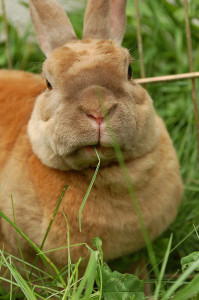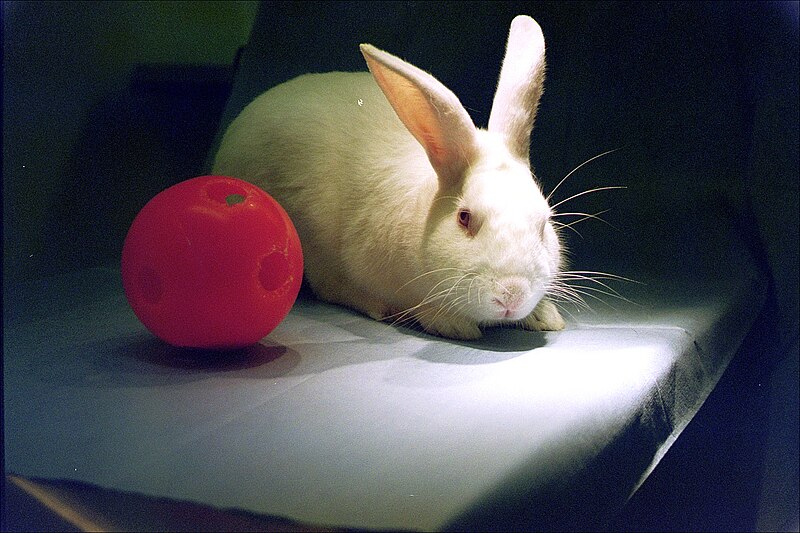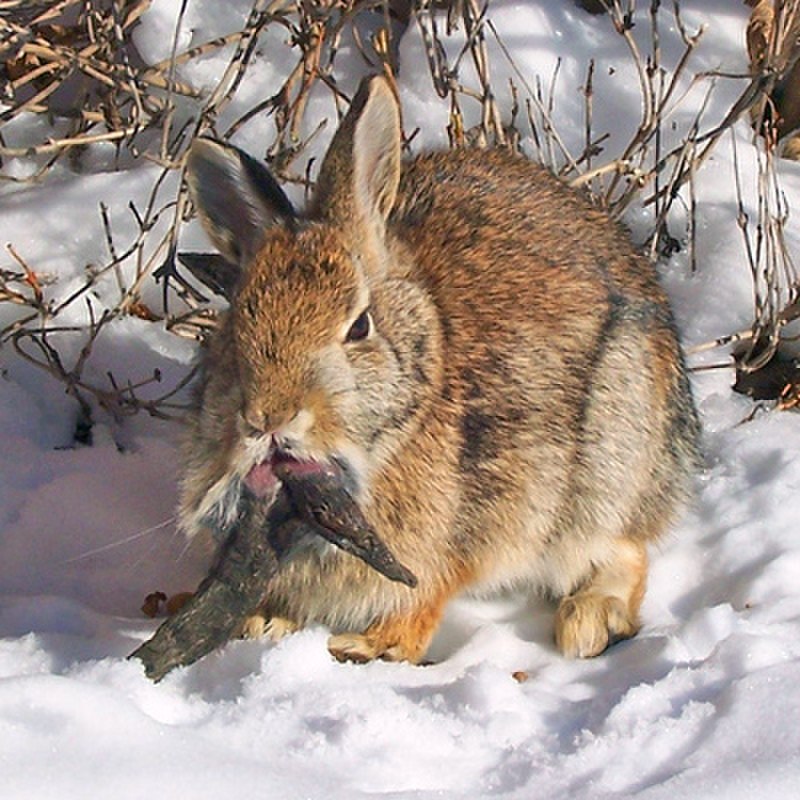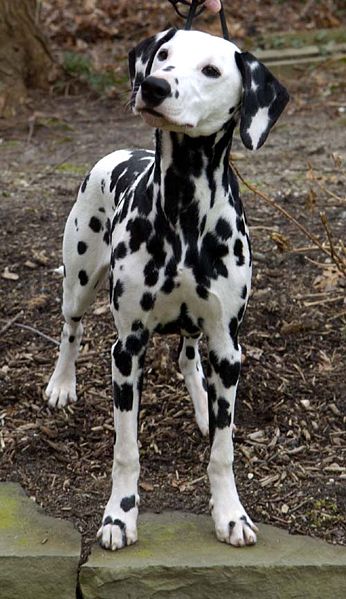Please welcome guest blogger Tabitha Strepthorne. For our perusal, she has an informative article about letting your rabbit roam in your backyard. While exploring your backyard and garden can be a great source of fun and exercise, there are opportunities for your rabbit to get into harm’s way. She has some helpful tips and advice you can use to make sure your furry friend stays safe while still having a great time. If you have any questions, comments or your own ideas for bunny fun, please let Tabitha and us know in the comments section below. Have a great weekend!
________________________________
Whether you have a Netherland dwarf or an English Giant it is important to make sure that your pet rabbit gets the exercise he or she needs. Large, spacious hutches are great for keeping your rabbit in shape, and there are outside hutches available for sunny days. There are even rabbit harnesses that you can put onto the rabbit so that you can take your bunny for walks!
However from personal experience, some bunnies may not like the feel of the harness and they will chew through it. Often outside hutches can seem cramped. So what to do?
Why not make the entire garden your bunny’s exercise yard? If you have a colourful, green garden with a few nice patches of grass, it may be worth looking into bunny-proofing your garden. Unfortunately if you have a pond, chances are no amount of ‘bunny proofing’ will make it safe for your rabbit to run around the garden.
Fences and Gates
Bunnies are a lot like babies. If you take your eyes off them for a minute, somehow they will find their way into the strangest cubby holes, nooks and crannies. This is why it is important to ensure that any fences are fully staked into the ground, and that any gates have a rubber lining or a low hanging base to make sure that the rabbit doesn’t crawl underneath the gate and get out of the garden.
If you have decking it is important to board up any entrances to the decking, as if your bunny is at all adventurous they will try to find a way underneath. Beneath the decking is a great place for rabbits as it is dark and shady – perfect for the summer!
Harmful Plants
Most rabbits have an innate sense of danger and will be able to sniff out any potentially harmful plants. However rabbits have strong taste buds and can be curious, particularly young rabbits, so on occasion things can take a turn for the worse.
Certain plants are incredibly harmful to rabbits, so it is important to look these up online to make sure that your bunny is safe. A few examples of common plants that can be poisonous to rabbits are oak leaves, poppies and buttercups although a little bit of digging online will harbour a more complete list of poisonous plants.
Bedding and Water
 Bunnies can get nervous too! If you have a small garden and a young bunny, try placing some of its bedding in a corner of the garden. The bunny will gravitate towards the bedding as a source of familiarity and comfort, and as it gets more used to the feel of the garden the rabbit will then start exploring more and more of the garden.
Bunnies can get nervous too! If you have a small garden and a young bunny, try placing some of its bedding in a corner of the garden. The bunny will gravitate towards the bedding as a source of familiarity and comfort, and as it gets more used to the feel of the garden the rabbit will then start exploring more and more of the garden.
The most important thing is ensuring that your bunny feels safe and secure while running around the garden. Make sure to put a bowl of water out for your bunny in a shaded area as they will become dehydrated. Weigh the bowl down with a few stones so that your bunny doesn’t knock the water over by running past it or jumping over it.
It is important to remember that nothing is foolproof! Although your bunny will be able to run and play it is crucial that you supervise them to ensure that you can take any action needed if your bunny starts getting into trouble or starts acting out. Like a small child, stay close to your bunny and be aware! With a safely bunny-proofed garden your rabbit can hop and run around to their hearts content!
 That Pet Blog That Pet Place Pet Blog
That Pet Blog That Pet Place Pet Blog






